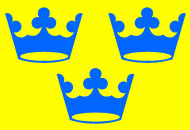



ONLINE (1-2-1) Lessons
ONLINE Fast Track
ONLINE Evening Classes
ONLINE Morning Classes
Level Descriptions
Self Assessment Test
Application Form
Cookie Policy
Design by WebbAttack
© SLT 2026


EU's Level Descriptions for Swedish

Our courses and Swedex exams are developed according to The Council of Europe's framework for languages (CEFR). This framework is recognised as a standard benchmark and describes language proficiency on a scale of levels from A1 to C2. A1 & A2 (Basic User) B1 & B2 (Independent User) C1 & C2 (Proficient User).
You can take a Swedex examination at three levels: A2, B1 and B2. Most Swedish employers want their employees to have a good B2 standard in order to work for them. Click on the Swedex-link to the left to find out more.
Why not do our Self Assessment Test to see what level you are at? Click here>> to go to the test.
A1
Can understand and use familiar everyday expressions and very basic phrases aimed at the satisfaction of needs of a concrete type. Can introduce myself and others and can ask and answer questions about personal details such as where I live, people I know and things I have. Can interact in a simple way provided the other person talks slowly and clearly and is prepared to help.
A2
Can understand sentences and frequently used expressions related to areas of most immediate relevance (e.g. very basic personal and family information, shopping, local geography, employment). Can communicate in simple and routine tasks requiring a simple and direct exchange of information on familiar and routine matters. Can describe in simple terms aspects of my background, immediate environment and matters in areas of immediate need.
B1
Can understand the main points of clear standard input on familiar matters regularly encountered in work, school, leisure, etc. Can deal with most situations likely to arise whilst travelling in an area where the language is spoken. Can produce simple connected texts on topics which are familiar or of personal interest. Can describe experiences and events, dreams, hopes & ambitions and briefly give reasons and explanations for opinions and plans.
B2
Can understand the main ideas of complex texts on both concrete and abstract topics, including technical discussions in my field of specialisation. Can interact with a degree of fluency and spontaneity that makes regular interaction with native speakers quite possible without strain for either party. Can produce clear, detailed texts on a wide range of subjects and explain a viewpoint on a topical issue giving the advantages and disadvantages of various options.
C1
Can understand a wide range of demanding, longer texts, and recognise implicit meaning. Can express myself fluently and spontaneously without much obvious searching for expressions. Can use language flexibly and effectively for social, academic and professional purposes. Can produce clear, well-structured, detailed texts on complex subjects, showing controlled use of organisational patterns, connectors and cohesive devices.
C2
Can understand with ease virtually everything heard or read. Can summarise information from different spoken and written sources, reconstructing arguments and accounts in a coherent presentation. Can express myself spontaneously, very fluently and precisely, differentiating finer shades of meaning even in more complex situations.